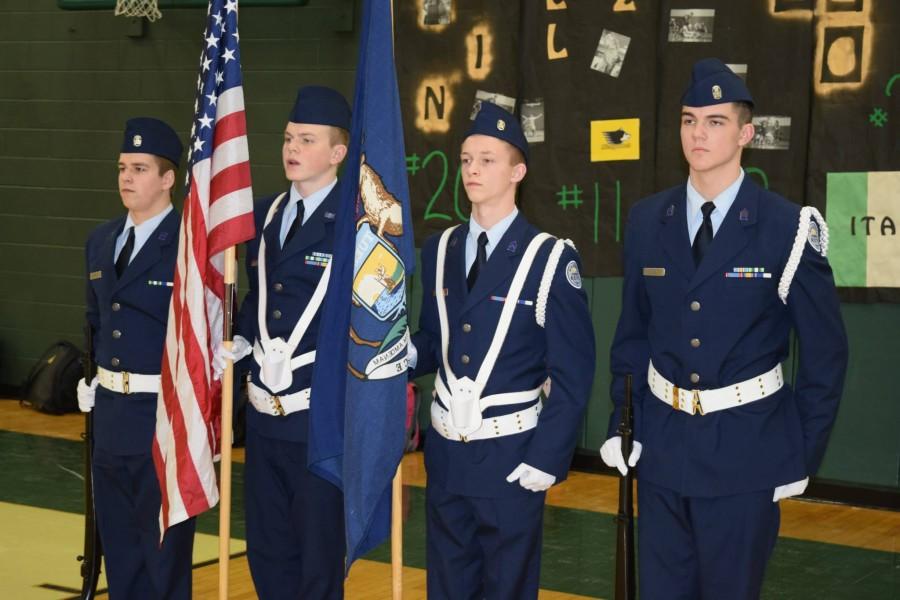JROTC program benefits Howell schools and community
April 14, 2015
“… a citizenship class that teaches leadership and aerospace science.”
That’s how Sergeant Ken Reinhart of Howell’s Air Force Junior Reserve Officer Training Corps (JROTC) describes the program at Howell High School, one of the newest programs at HHS that currently has 108 cadets in its first year.
“I’m excited to be able to start up a new Air Force JROTC program here at Howell. I see it as a great benefit for both Howell High School and also the local community, ” says Sgt. Reinhart.
The 2014-2015 school year is the first for JROTC. It joins more than 1,700 other programs in the United States. The cadets in Howell’s program are part of around 314,000 total across the nation.
“The cadets learn personal responsibility and leadership skills. They also learn how to give back to their school and community via service projects,” says Sgt. Reinhart, “We also try to provide a safe environment where cadets will feel they are all treated equal.”
The cadets also agree that there are certain advantages to being a part of the program.
“I joined because I realized the opportunities JROTC gives,” says sophomore Senior Airman Sullivan Runion, “I am going to the military.”
Sgt. Reinhart got his start at a middle school ROTC program, teaching in Wichita, Kansas for two years, before transferring to a high school AFJROTC program in Garden City, Michigan, and finally coming to Howell to start the program here.
The addition of the program was not without its woes. The first time an attempt was made to bring the program to HHS it failed, because of a lack of traction with the school board due to a teacher contract issue.
“I actually was somewhat involved in marketing the program here,” says Sgt. Reinhart, “I came out here from an old position and spent a day talking with administrators and parents about the benefits of AFJROTC.”
The classes are much different from ordinary classes because it is a cadet led program, which means that the cadets have the responsibility of taking attendance and keeping the class in order, while also taking care of discipline, uniform inspections, and other tasks.
“We can’t have any facial hair and our hair can’t touch our ears,” says Runion.
Mondays, Tuesdays, and Thursdays are more regular academic days. The cadets wear their uniforms on Wednesdays and they practice their marching. Fridays are reserved for physical fitness in the gym.
“I like the physical fitness stuff the best,” says junior Airman First Class Blake Presley, “we do it and then after we play dodgeball or basketball or some other game. It is fun.”
Aside from the things that happen during school hours, there are also many other things JROTC does post-school, such as Color Guard, parades, and service projects. By participating in these events, a cadet can move up in the ranks if they show that they “are accountable enough to take on the additional responsibility that comes with leadership,” says Sgt. Reinhart.
“I like the Color Guard because it is a nice formal unit,” says Color Guard sophomore Airman First Class Jimmy Colón, “It is a nice way to top off events.”
It seems as if many of the cadets enjoy the program, and with the large amount of opportunities for colleges (like the regular ROTC program), and also in the military, the future of the program looks bright.
“I see us growing more into a ‘Cadet Led’ program where that cadets draft up the events they would like to be involved in and lead them from start to finish,” says Sgt Reinhart, “I also see our program growing to around 150 cadets and improving in areas in our extracurricular teams like Drill, Fitness and academic teams to where they are very competitive in events that we complete in.”




